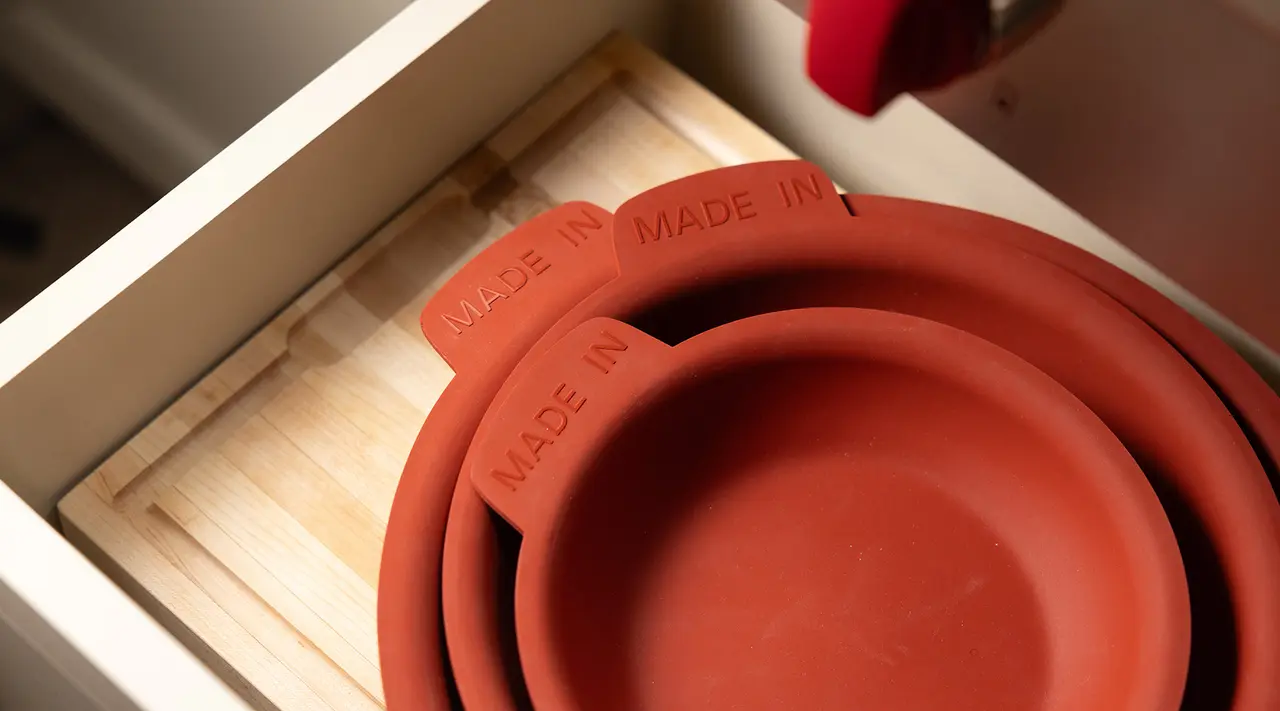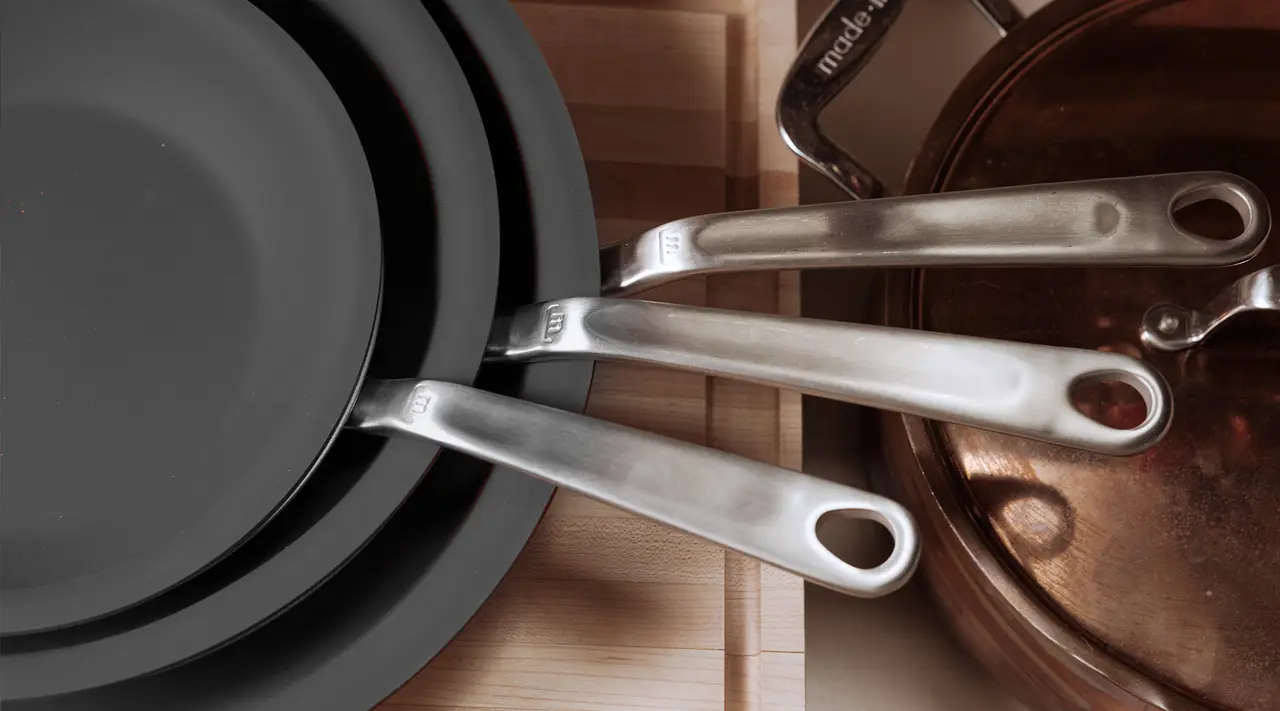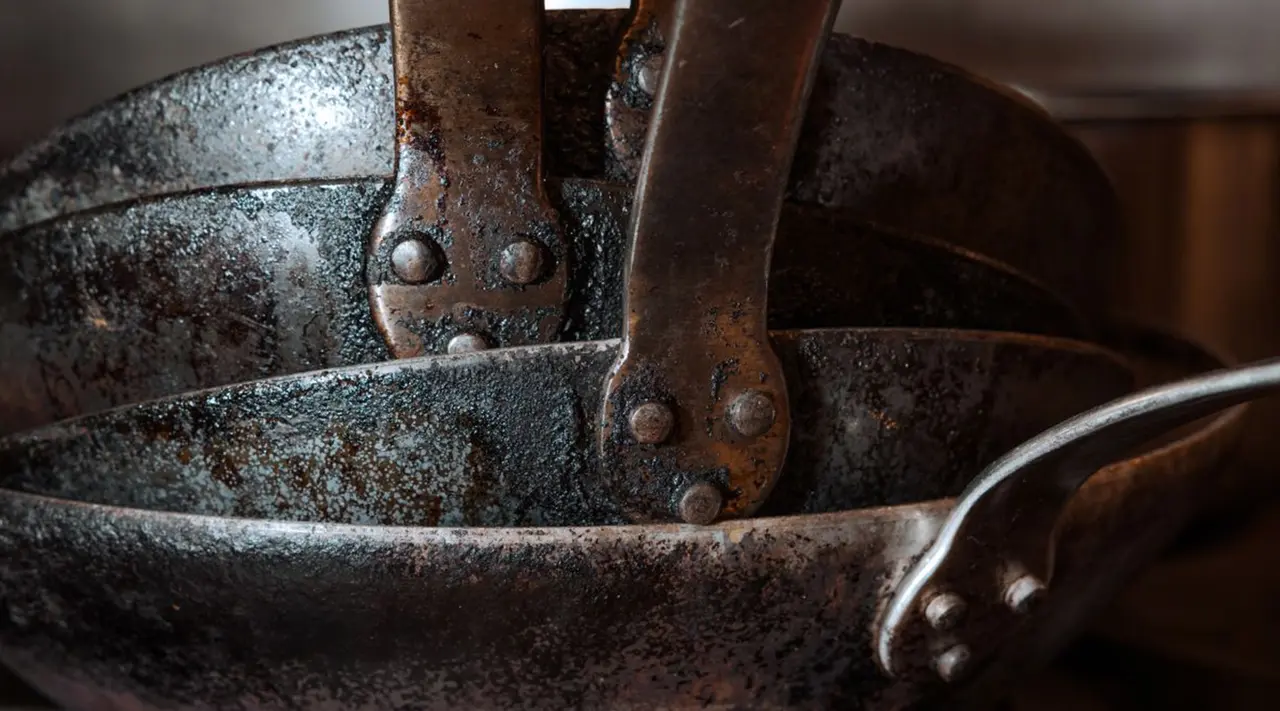Once you’ve learned how to sear, deglaze, and deep-fry with the best of them, it’s time to turn your attention to another key part of cooking: keeping a clean, organized kitchen. As any professional chef will tell you, this is one of (if not the) most essential parts of any well-run kitchen, and a huge part of that is how you choose to store your pots and pans.
In this guide, we’ll explain why storing your pots and pans correctly matters and how best to organize your cookware based on the size and layout of your kitchen.
Does How You Store Your Pans Matter?

As our care and maintenance guides emphasize, yes, how you store your pans matter (a lot!). When you carelessly stack pots and pans on top of one another without any padding, you risk damaging the finish and/or coating on your cookware, not to mention make it more difficult to find and access the items you need when you need them.
While this matters most with delicate coatings like non stick, ceramic, and enamel, you should apply the same level of care to all of your cookware. Taking the time to properly store even your most durable stainless pans can keep them scratch-free and properly performing for years to come.
How to Store Pots and Pans

Here are a few of our favorite ways to safely store pots and pans, while still keeping them within easy reach.
Nesting and Stacking
This is probably the most common way to store your cookware—though, sadly, most people probably aren’t doing it right. If this is your method of choice, make sure to always place one of our Pan Protectors, a dish towel, or a trivet inside each pan before putting anything on top of or inside of it. Otherwise, you may wind up with chipped enamel, scratched coating, or ruined seasoning.
Hanging Racks
If you have the space for it, we highly recommend utilizing a hanging rack. Not only do these look extremely cheffy and help you feel more professional, but they also provide plenty of space between pots and pans—essential for keeping them from bumping into each other, while also making it easy to grab the item you need. This option typically works best for larger kitchens and ones with plenty of vertical or wall space.
Pegboards
Pegboards are a solid alternative to hanging racks: not only are they often easier, more renter-friendly, and cheaper to install, but they offer plenty of vertical storage space, allowing you to store your pots and pans in a way that keeps them separate as well as easy to grab. Like a hanging rack, this option is a better fit for home kitchens with a bit of extra wall space.
Stovetop Display
If you’ve got a truly tiny kitchen or are at capacity on cabinet space, stovetop storage is a solid space-saving hack. Of course, you can also do this if you’ve got a beautiful piece you want to display front and center, like our Copper Saucepan or Enameled Cast Iron Dutch Oven.
Which Pan Storage Method Is Best?

Honestly, how you organize your kitchen is extremely subjective—we can’t say there’s a one-size-fits-all method that’s best for everyone. If your kitchen has plenty of wall space or vertical space, go for the hanging rack or pegboard options.
Of course, installing a new fixture in your kitchen isn’t always viable for renters: if that’s the case, the nesting-and-stacking or stovetop display methods are excellent options, depending on the amount of cabinet or stovetop space you’re working with. You may even opt for a combination of storage methods, depending on your kitchen layout and which pans you want to keep readily available.
Ready to Shop?
Aside from locking down your mise en place skills, having a safe, organized home kitchen is one of the best ways to run an efficient kitchen and cut down on unnecessary stress. Our new Pan Protectors are made of FDA-approved silicone, offering the perfect cushion for even your most delicate pans—and since they come in a set of three sizes, they fit perfectly inside everything from our 10" CeramiClad™ Frying Pan to our 8QT Stainless Clad Stock Pot.































